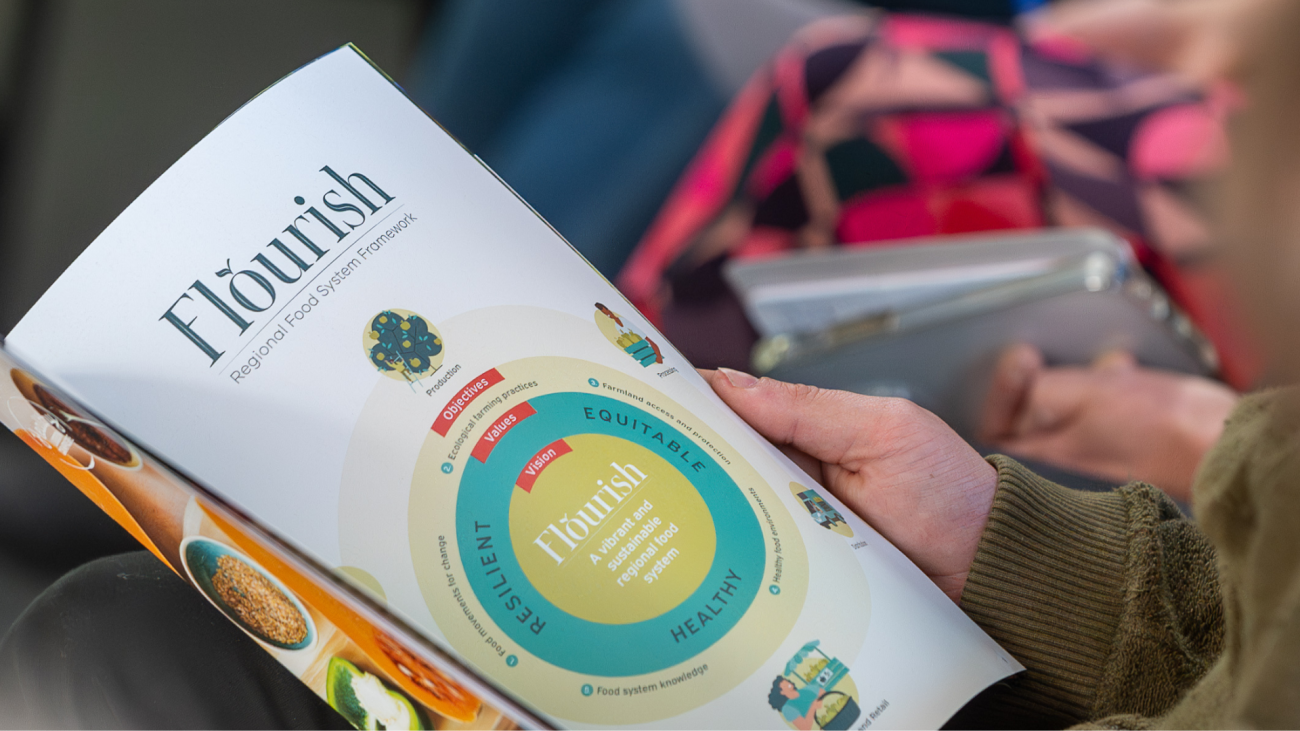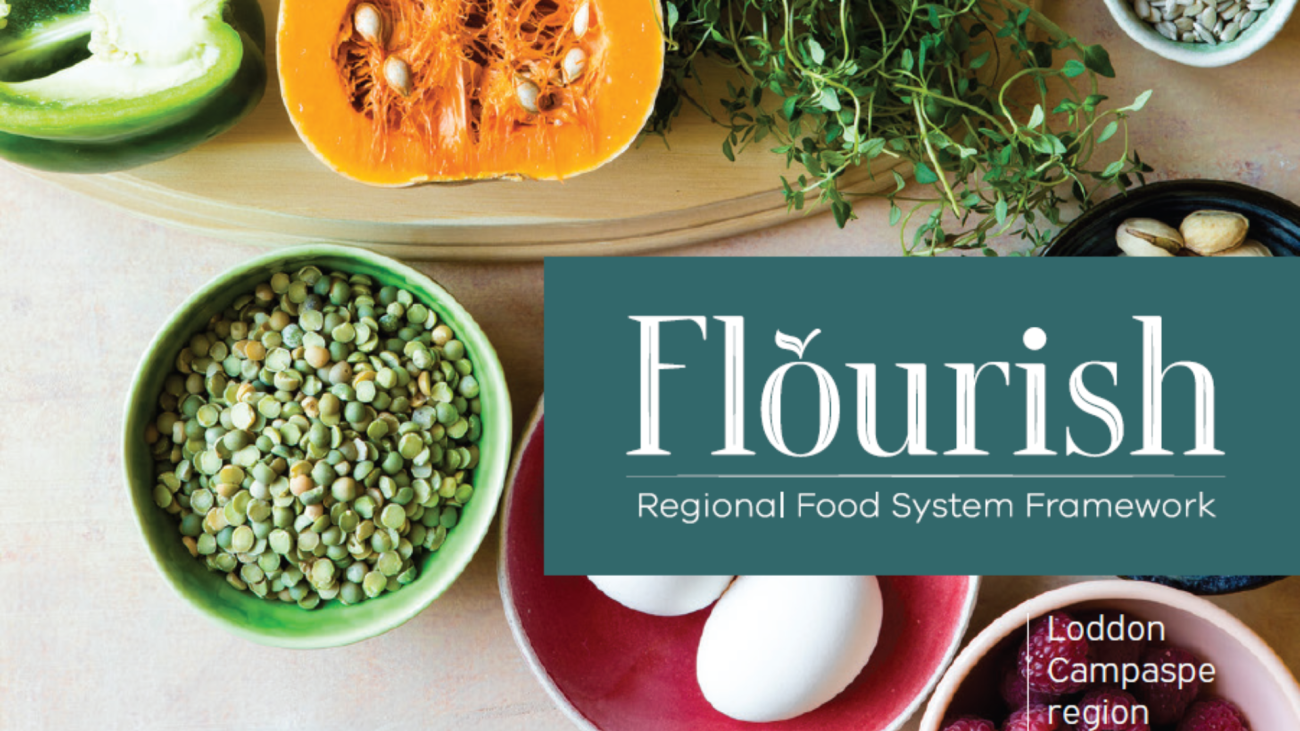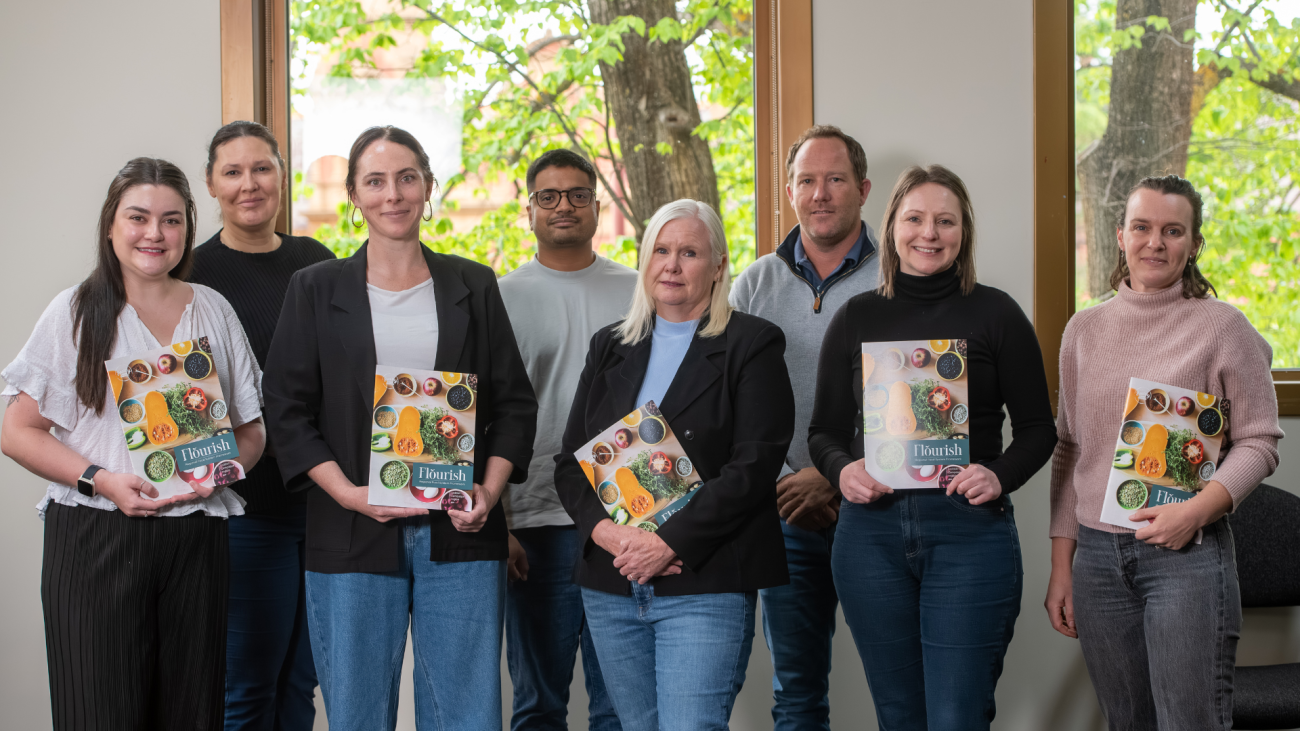Healthy Loddon Campaspe has worked with stakeholders from across the region to develop the Flourish Regional Food System Framework.
Flourish will help guide the work of local government, community organisations, and key stakeholders across the Loddon Campaspe region to create a healthy, equitable and sustainable regional food system.
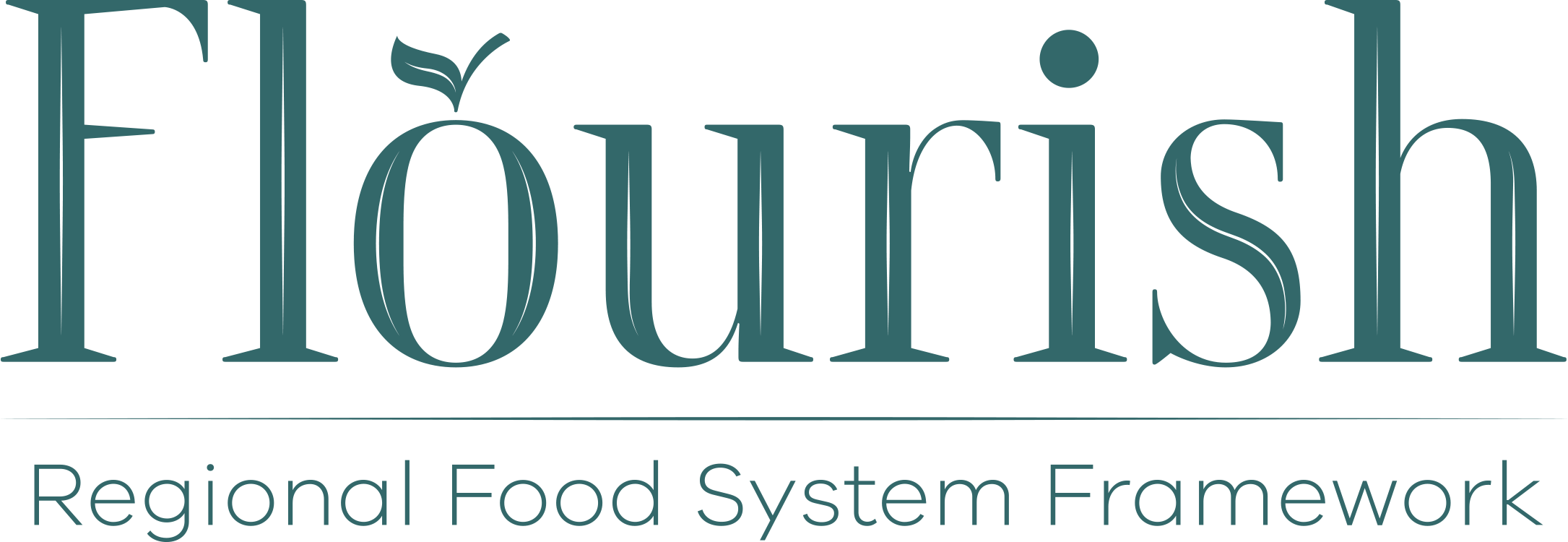
Food systems are defined as: "The entire range of actors and their interlinked value-adding activities involved in the production, aggregation, processing, distribution, consumption, and disposal of food products that originate from agriculture, forestry or fisheries, and parts of the broader economic, societal and natural environments in which they are embedded.”
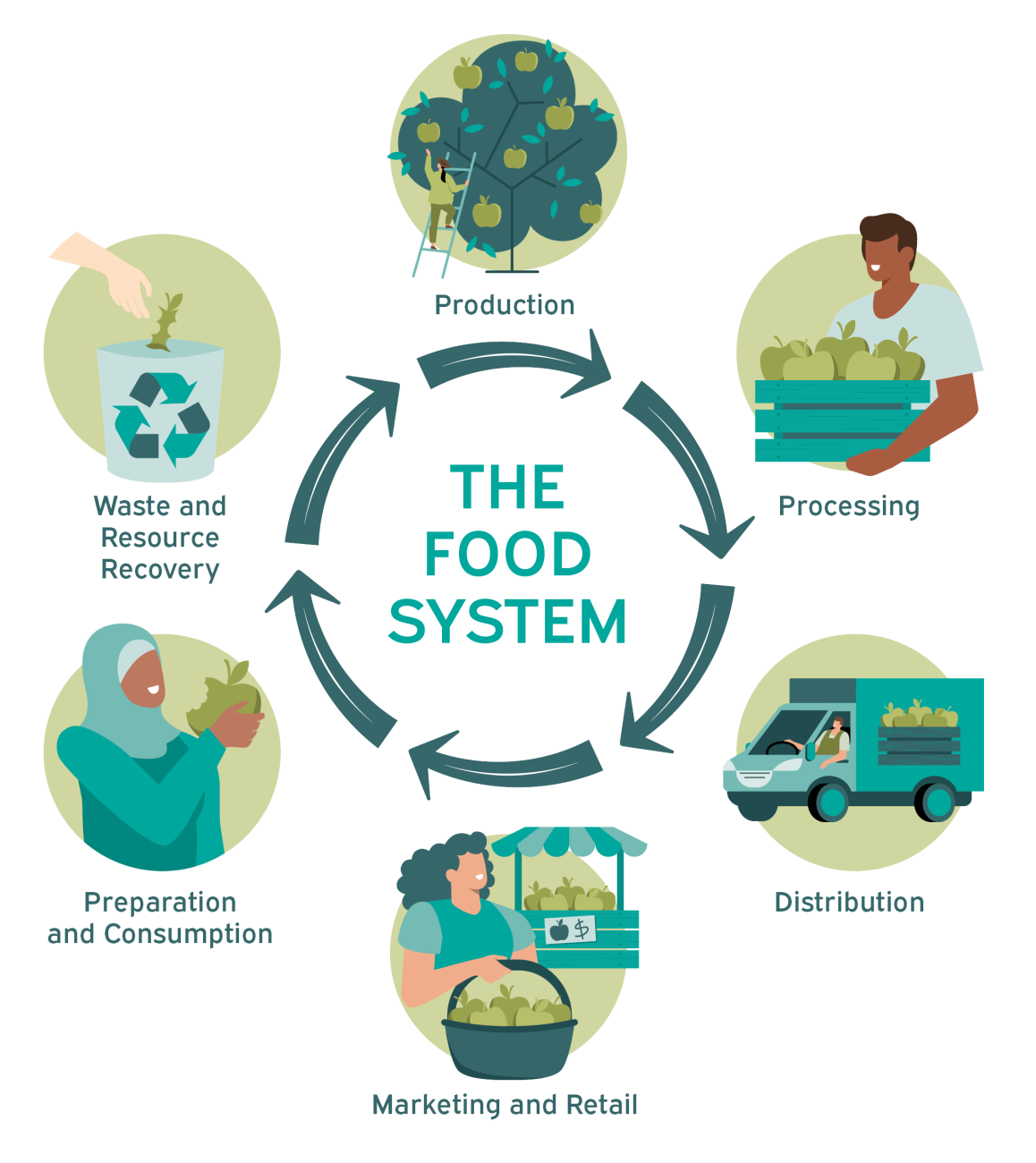
With over 90% of land in the region dedicated to farming, agriculture plays a significant role in our food system. The region has over 44,000 agricultural businesses, primarily in the Loddon and Campaspe Shires. Agriculture is a significant economic driver, generating over $1.6 billion from industries such as dairy, meat, poultry, and grains. The food processing sector also enhances our economy, contributing an additional $2.7 billion, mainly through the processing of meat, dairy, fruit and vegetables.
While a large amount of food is produced in the region, that food does not necessarily reach local communities, nor ensure that our communities are well-nourished. Food insecurity is a major challenge for our vulnerable community members. Although Australia is a high-income country, food insecurity is a real issue for many including those on low and middle incomes.
The 2019 Active Living Census found that one in 10 households in the region are food insecure, which is 50% higher than the state average, and in some areas this increases to one in five households not having enough food to eat. Only half of the region’s adult residents consume the recommended two servings of fruit a day, which drops to one in eight consuming five or more daily servings of vegetables. Two in three adults in the region are an unhealthy weight, which is significantly higher than the average for Victoria.
While we have known the importance and basic principles of healthy eating for a long time, knowledge isn’t enough to ensure healthy food choices. What we eat is heavily influenced by the circumstances of our everyday lives. Taking a systems approach helps us see that health is not a matter of individual choice but is shaped by how we collectively organise our food system, and that the health of people and the natural world are fundamentally intertwined.
Our food system is made up of the countless daily decisions about how to feed our families and communities and how to work the land to make that happen. The outcomes of these decisions determine whether our food system is vibrant and pulses with life by assuring food security and regenerating landscapes or contributes to the poor health of our communities and landscapes. Food insecurity, environmental degradation, and climate change (amongst other complex issues) show that decisions we’ve made about our food system have contributed to significant challenges.
This highlights the need for a new approach that connects our food system with local communities, while considering the environment and the effects of climate change.
Flourish has been developed to provide a strategic framework to guide and influence the decisions and activities of our food system actors, including the six local governments in the Loddon Campaspe region, food system workers, residents and other stakeholders, to promote health, equity, and resilience for all.
Flourish is a tool to guide the transformation of our region’s food system so that we can all flourish together. It asks us to imagine a food future that is more desirable to live in. A future designed by and for communities and Country, where everyone has enough to eat and is well-nourished, where landscapes are healthy, farming contributes to biodiversity and secures rewarding livelihoods, and where communities can reconnect with food in their neighbourhoods.
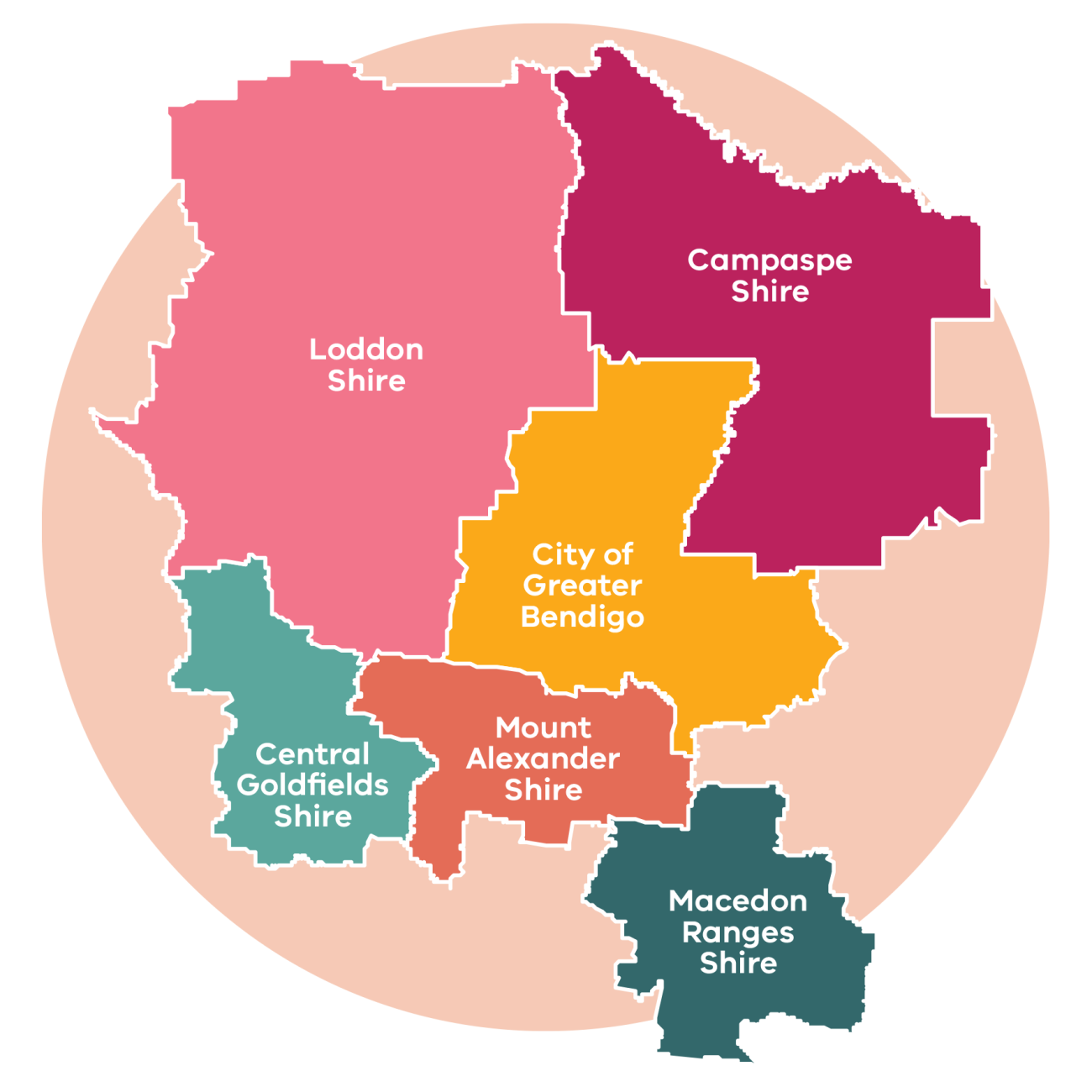

HLC, supported by funding from the Victorian State Government, is dedicated to improving health outcomes in Victoria’s Loddon Campaspe region. Covering the six local government areas of Campaspe Shire, Central Goldfields Shire, City of Greater Bendigo, Loddon Shire, Macedon Ranges Shire, and Mount Alexander Shire, HLC aims to influence both local and regional systems for better health, with the development of Flourish showcasing this effort. Recognising that building a healthy, equitable and resilient food system is a shared responsibility, HLC acknowledges its role in driving change, though we cannot do this alone.
Key actions for HLC include establishing a governance structure for Flourish, supporting implementation of the framework, and evaluating the processes and outcomes to ensure the framework’s success and positive impact on our region’s health and wellbeing.
Flourish was developed through a collaborative process led by a food systems expert and a group of regional stakeholders.
The process began with comprehensive activities to understand the local food system including an in-depth assessment based on international standards, a review of over 60 policy documents, and a survey of residents’ experiences.
This groundwork laid the foundation for a series of co-design workshops, where participants from across the region came together to identify key challenges and envision a future where these issues are addressed.
The insights gained from these workshops were used to create the initial draft of Flourish, which was further refined through two rounds of stakeholder feedback to create the final version of the framework.

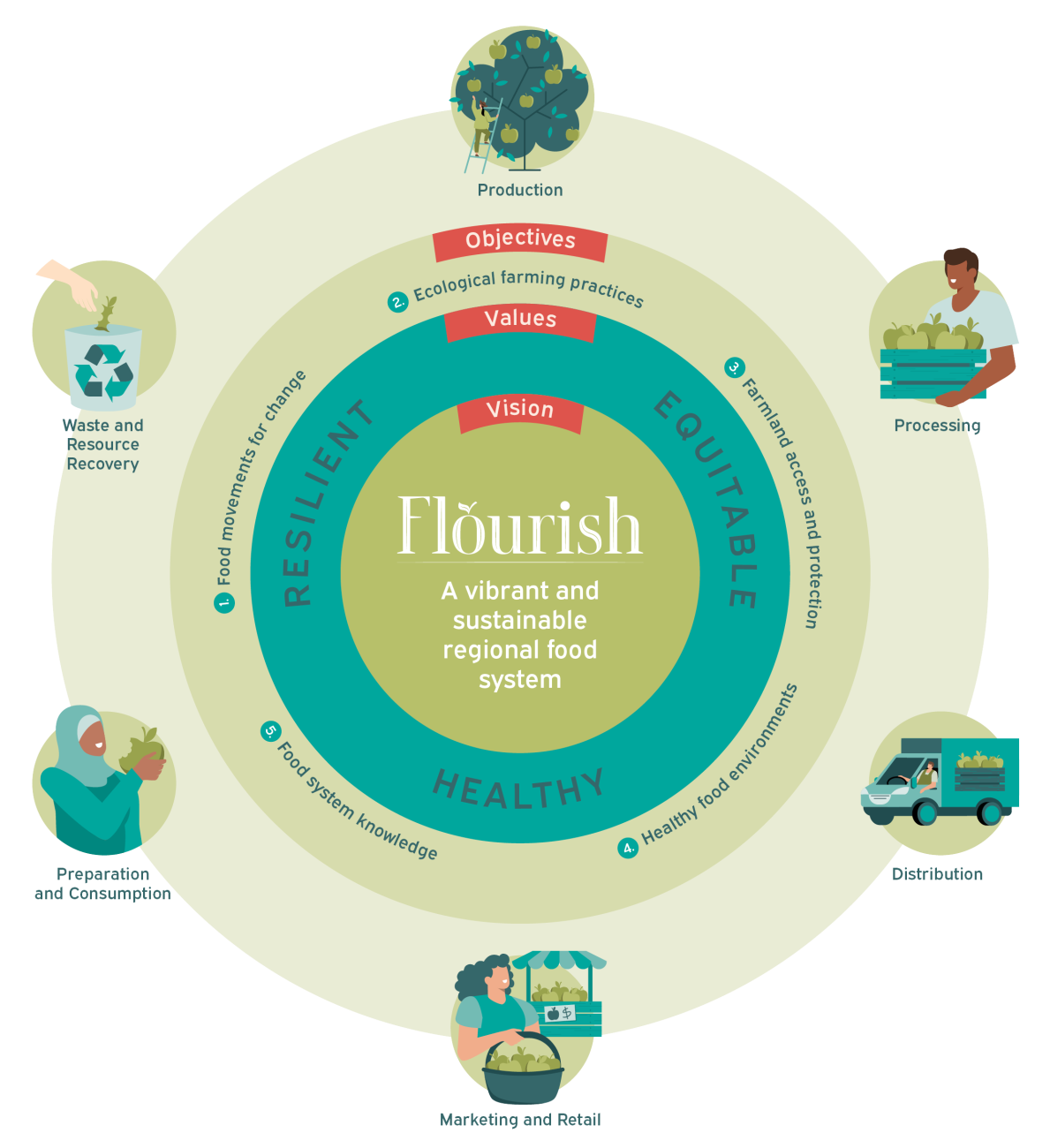
Do you have any questions or queries about Flourish? Get in contact with us at [email protected].

